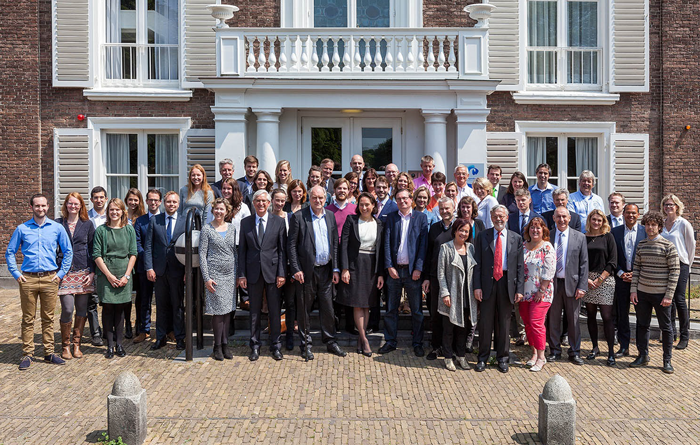Marketing and Communications

In 2017, the Clingendael Institute further strengthened its outreach strategies towards public sector, NGOs, private sector, media and other stakeholders. The Marketing and Communications team invested in more targeted approaches for the ‘delivery’ of Clingendael publications, training and events, partly by supporting the organisation with relation management. At the same time, the Institute broadened and internationalised its audience by launching a state-of-the-art, more marketing-driven and primarily English-language website (www.clingendael.org), of which Clingendael Magazine forms an integral part.
Facts and figures new website (Sept. 2017 - August 2018)[4]
By launching the new website (Sept. 2017), Clingendael more than doubled its yearly unique pageviews from 335,140 (2016) to 708,452 (September 2017-August 2018).



| Key figures Newsletter and socials |
31/12/2016 |
31/12/2017 |
|---|---|---|
| Clingendael’s weekly Newsletter (subscriptions) |
5,292 |
6,259 |
|
|
||
| Twitter (followers) |
7,383 |
9,120 |
| LinkedIn (followers) |
6,969 |
9,023 |
| Facebook (followers) |
3,298 |
4,820 |
Human Resources

On 1 January 2017, the Clingendael Institute employed 97 staff. On 1 January 2018 this number had decreased to 94.
In 2017, the Institute offered 30 vacancies, 18 of which were for internships and 12 of which were for regular jobs.
The Clingendael Institute primarily recruits by announcing vacancies on its website, via social media platforms such as Twitter, and through its own networks.
In 2017 Clingendael spent more on training than in 2016, because of security training for the Institute’s own staff.
| Overview of personnel 2017 |
|
|---|---|
| Total number of employees (1-1-2018) |
94 |
| New employees hired |
12 |
| Total number of departing employees |
15 |
| Employees on indefinite-term contracts (1-1-2018) |
63 |
| Employees on fixed-term contracts (1-1-2018) |
31 |
| Male/female ratio |
43/57 |
Finances

The pre-tax result is €596,000 lower than budgeted. This is mainly due to below-budget net revenues offset only partly by lower costs.
A key factor in the result is that 2017 was the first year in which the Clingendael Institute no longer received any basic subsidy from the ministries of Foreign Affairs and Defence and in which the Research department’s relationship with the Ministries of Foreign Affairs and Defence was based on the PROGRESS tender. Although Clingendael won all five parts of the tender, this actually caused a sharp fall in Clingendael’s income, partly due to the formation of international consortia to obtain the PROGRESS contracts.
The decrease in income resulting from the abolition of the basic subsidy was not fully offset by contracts won from other clients in 2017. At the same time, there is a rising trend in contract acquisition.
Clingendael is currently conducting an analysis of products and markets against the background of the changed relationship with the Ministries of Foreign Affairs and Defence and the increasing demand from other clients.
Combined with the Multi-Year Vision, this forms the basis for the reorganisation that is due to be implemented in the near term. This will make it possible to achieve the required efficiency improvement and a structural reduction in organisational costs in cases where these are too high.
|
|
2015 |
2016 |
2017 |
|---|---|---|---|
| Funding Type |
|||
| Projects |
€12.0 M |
€12.4 M |
€ 12.6 M |
| Core funding (Dutch MFA and MOD) Financial and other result |
€ 1.1 M |
€ 1.1 M |
€ 0.8 M € 0.3 M |
| Costs |
|||
| Staff costs |
€ 5.2 M |
€ 6.2 M |
€ 6.5 M |
| Corporate costs |
€ 2.3 M |
€ 1.6 M |
€ 1.6 M |
| Project costs |
€ 5.0 M |
€ 5.7 M |
€ 5.9 M |
| Result |
€ 0.6 M |
€ 0.0 M |
€-/- 0.3 M |

An overview of all clients and income can be found here.
